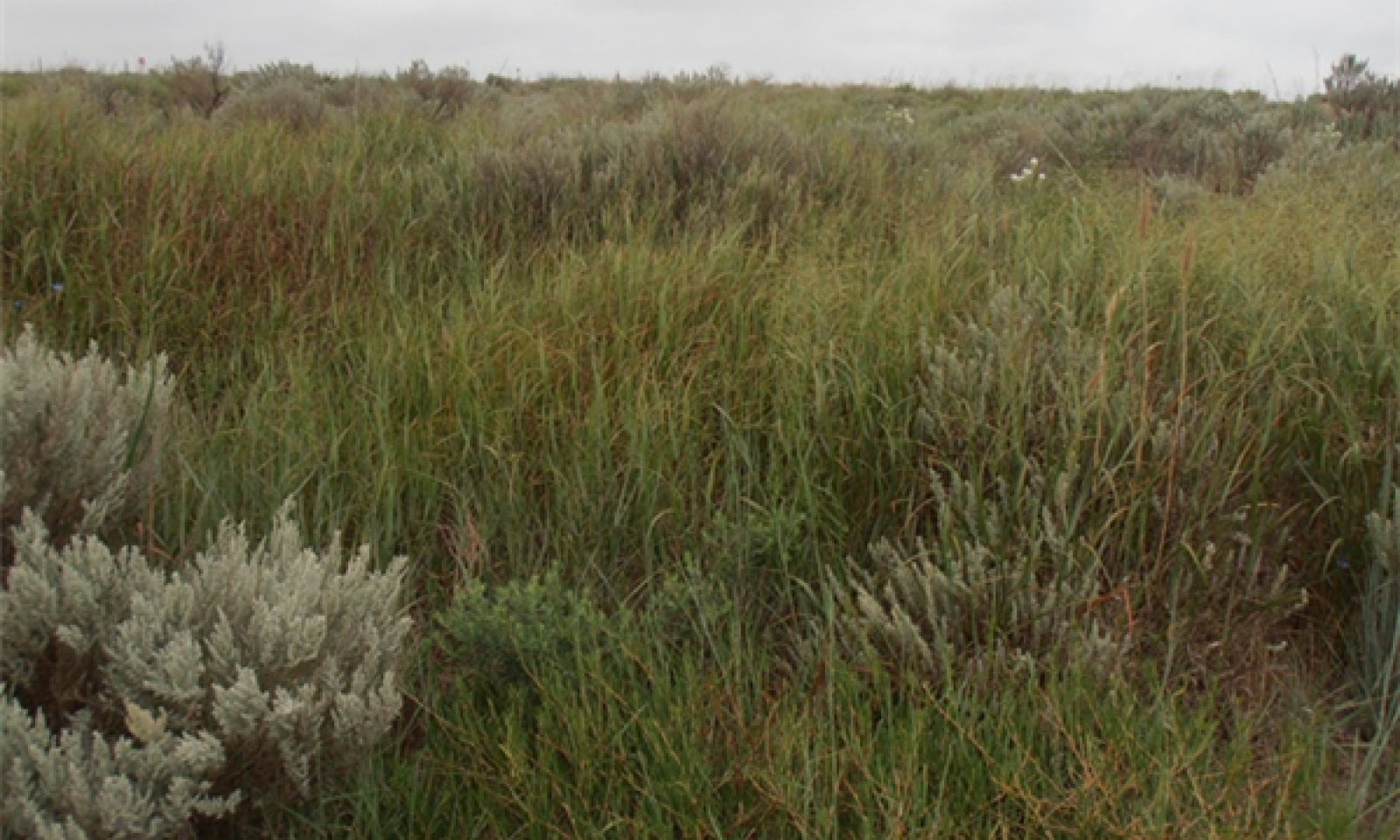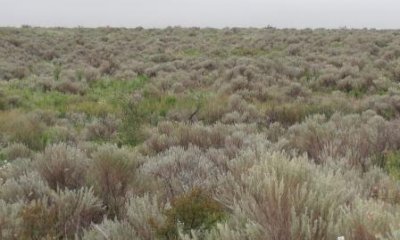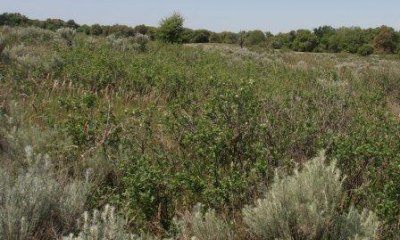
Rolling Sands
Scenario model
Current ecosystem state
Select a state
Management practices/drivers
Select a transition or restoration pathway
-
Transition T1A
Absence of disturbance and natural regeneration over time, may be coupled with excessive grazing pressure
More details -
Restoration pathway R2A
Adequate rest from defoliation, followed by reintroduction of historic disturbance regimes
More details -
Transition T2A
Absence of disturbance and natural regeneration over time, may be coupled with excessive grazing pressure
More details -
Restoration pathway R3A
Removal of woody canopy and adequate rest from defoliation
More details -
No transition or restoration pathway between the selected states has been described
Target ecosystem state
Select a state
State 1
Mixed-Grass Shrubland




Description
This ecological state is dominated by warm season native species and is dominated by little bluestem as well as sand bluestem. Shrubs and annual forbs are subdominant although fluctuations naturally occur between the plant communities within this state depending on weather patterns and time since fire. These changes may also be induced by changes in management and use.
Submodel
Description
This ecological state is the result of a transition across a threshold from the reference state (1). It is dominated by midgrass species with subdominant annual forbs and grasses. Shrub species are still subdominant, but have exceeded the threshold of 20% canopy cover. This state is less resilient to disturbances than the reference state (1). Transition to this state may decrease species diversity and above ground herbaceous biomass production.
Submodel
Description
This ecological state is the result of a transition across a threshold from the Midgrass Shrubland State (2). It is dominated by woody species with an understory of annual grasses, forbs, and an abundant amount of bare ground. Very few remnant tallgrasses or midgrasses will be found in this plant community.
Submodel
Mechanism
Lack of disturbance such as fire within the historic fire return interval has allowed sagebrush canopy to increase to a steady level that typically does not exceed 30% on the average within management units. Small inclusions of sagebrush that exceeds 30% may be present but typically is not normal on a landscape basis. Grazing has continued to impact the palatable grasses and forbs while an increase in annual forbs and the lack of most tallgrasses in any measurable amount is typical.
Mechanism
With the implementation of both Prescribed Grazing (seasonal deferment) and disturbance like Prescribed Burning conservation practices, the Midgrass Shrubland State may be restored back to the Mixed-grass Shrubland State. Prescribed grazing to decrease the pressure on palatable species will improve the grass and forb component. This will also increase the amount of fine fuel needed to effectively implement prescribed fire to reduce the canopy cover of sand sagebrush and promote fire tolerant grass species. This restoration timeframe is dependent upon the degree of degradation, available moisture during rest periods, fire return intervals, and the management strategies.
Mechanism
With continuous abusive grazing, no disturbance such as fire or brush management, the Midgrass Shrubland State will transition into the Shrubland State. This transition is due to the loss of or lack of any harvestable production of perennial grass species. Sand Sagebrush canopy is consistent as it is not typically affected by overgrazing by herbivores but other brush species have increased in response to the lack of a disturbance like fire. (Ex - Eastern Red Cedar) Most production is made up of a few perennial grass and forb species along with a surge in annual grass and forb production.
Mechanism
Restoration of this severely degraded state requires long term planning. Depending on the remaining grass species, it may take years (decades) of season long grazing deferment as well as suitable weather conditions to recover. Implementation of a prescribed fire program is also key to the restoration of this state. Burning will return sagebrush cover to a lower canopy percent and provide control of Eastern Redcedar, but may not recover the perennial grass component rapidly. Over time, with the implementation of proper stocking rates and prescribed burning program, this state may be restored to a Midgrass Shrubland State (2).
Model keys
Briefcase
Add ecological sites and Major Land Resource Areas to your briefcase by clicking on the briefcase (![]() ) icon wherever it occurs. Drag and drop items to reorder. Cookies are used to store briefcase items between browsing sessions. Because of this, the number of items that can be added to your briefcase is limited, and briefcase items added on one device and browser cannot be accessed from another device or browser. Users who do not wish to place cookies on their devices should not use the briefcase tool. Briefcase cookies serve no other purpose than described here and are deleted whenever browsing history is cleared.
) icon wherever it occurs. Drag and drop items to reorder. Cookies are used to store briefcase items between browsing sessions. Because of this, the number of items that can be added to your briefcase is limited, and briefcase items added on one device and browser cannot be accessed from another device or browser. Users who do not wish to place cookies on their devices should not use the briefcase tool. Briefcase cookies serve no other purpose than described here and are deleted whenever browsing history is cleared.
Ecological sites
Major Land Resource Areas
The Ecosystem Dynamics Interpretive Tool is an information system framework developed by the USDA-ARS Jornada Experimental Range, USDA Natural Resources Conservation Service, and New Mexico State University.




